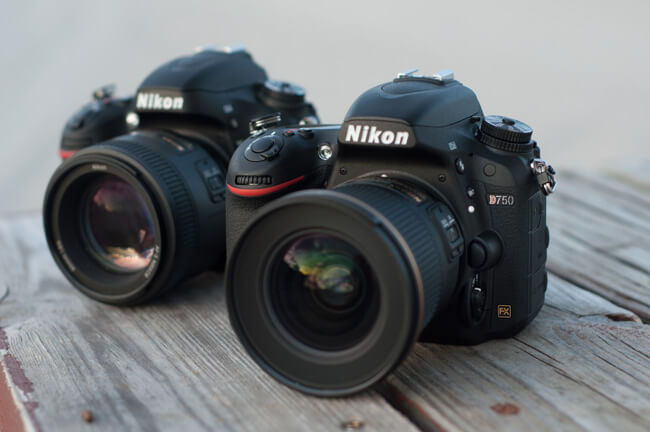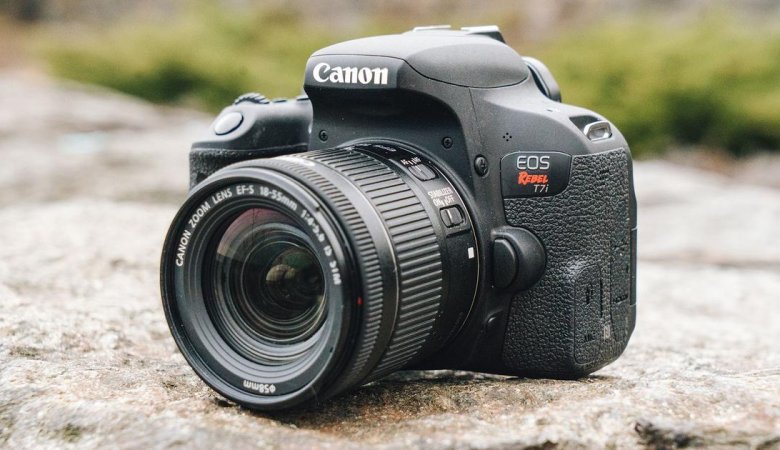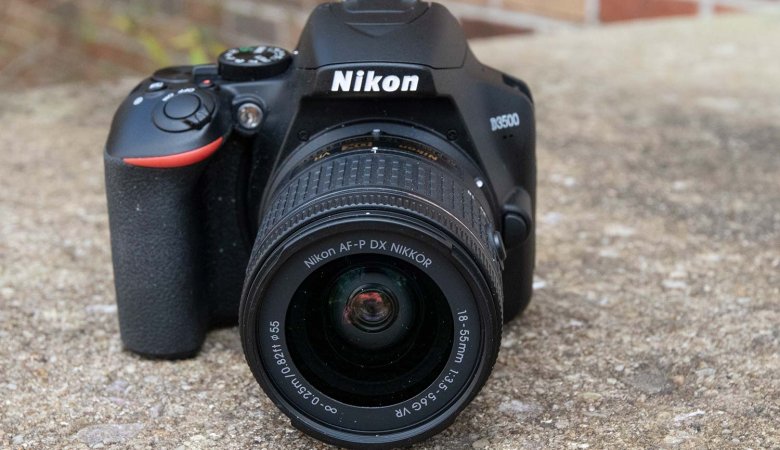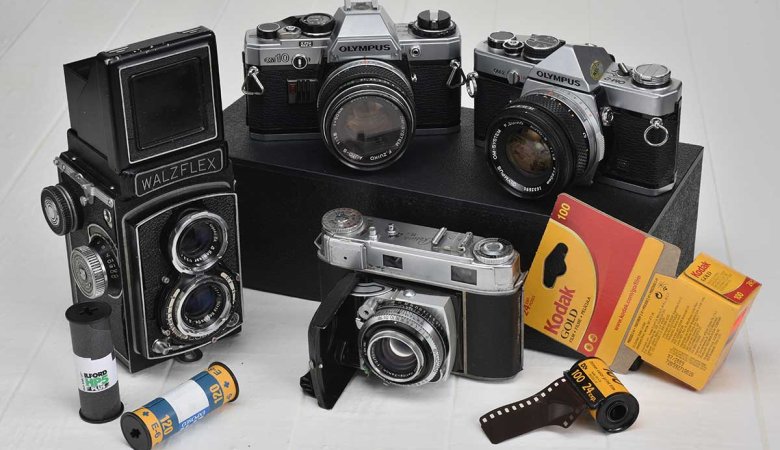Nikon D750 and Nikon D610 are the two fanatic cameras which were launched in September 2014 and October 2013 respectively. Both of them are DSLR cameras well equipped with full frame sensors.
In a Hurry? Here are Our Top Choices:
Here is a quick snapshot of our top-rated picks.
Even though, both of them share quite a bit similarities in terms of size, resolution and ergonomics, there are some major differences in their performances. In this blog, we will be comparing both of them on certain features and criteria. So, let’s take a look at their specifications.
Brief Comparison of Nikon D610 and D750
| SPECIFICATIONS | NIKON D610 | NIKON D750 |
| Launch | October 2013 | September 2014 |
| Sensor | It has a full frame sensor but uses EXPEED3 which is slower than EXPEED4 | It has a full frame sensor and uses EXPEED4, more advanced image processing engine than EXPEED3 |
| Design | It offers only built-in focus motor which moves the lens to autofocus. | It supports built-in focus motor and a flip-out screen which is useful for taking tricky shots. |
| Optics | Nikon D610 has 39 focus points, hence less flexibility to focus on image | D750 possesses 51 focus points, hence more flexibility to focus on image |
| Display | Has LCD display with 3 sub-pixels per pixel and resolution of 921k dots | Has LCD display with 3 sub-pixels per pixel and resolution of 1229k dots which gives sharper images |
| Video | D610 camera supports 1080×30 fps resolution | D750 supports 1080×60 fps resolution with better picture quality |
| Audio | It doesn’t support stereo microphone | It supports stereo microphone which gives better sound quality. |
| Connectivity | It doesn’t support USB Version and Wi-Fi connectivity. | Supports the latest USB version and Wi-Fi Connectivity for faster and better connectivity and power management |
| Remote Control | It cannot be controlled or operated remotely | It can be controlled and operated remotely with smartphone |
| Battery | Nikon D610 gives 900 shots per charge | Nikon D750 gives 1230 shots per charge |
Launch Date
Nikon D610 is a DSLR camera which was launched in October 2013 while Nikon D750 was introduced to the market just after 11 months i.e., in the month of September 2014.
Sensors
The imaging sensor size of any camera is one of the vital features that determines the quality of the image clicked by it.A larger sensor possesses better pixels, low-light sensitivity, rich color-depth and wider dynamic range than the smaller sensor of same technical generation.
Both the Nikon D610 and D750 cameras offer a full frame sensor and format factor of 1.0. Also, both of them provide an aspect ratio of 3:2 but technology-wise, Nikon D750 uses EXPEED 4 which is more advanced image processing engine than D610 which uses EXPEED 3.
Design
Nikon D610 is designed and equipped with features like built-in focus motor which moves the lens to autofocus and allows the photographer to use a wider range of lenses.
The camera is weather-sealed which protects it with additional seals to prevent failure shots caused due to raindrops, dust, or water splashes.
The D750 camera is also designed with the same features as of D610 and on top of them, it also offers a flip-out screen which is useful for taking tricky shots.
Display
Both the Nikon cameras offer LCD displays with 3 sub-pixels per pixel, which gives crisp and sharp images. However, the resolutions are different, where Nikon D610 has a resolution of 921k dots, the D750 offers a resolution of 1229k dots. Higher the screen resolution, sharper and better is the image which makes the photos easy to review.
So, Nikon D750 wins here as it offers a better resolution than the Nikon D610.
Optics
The sensor size of both the cameras are same which is 35.9x24mm, but, Nikon D610 has 39 focus points whereas D750 possesses 51 focus points. More number of focus points give more flexibility to focus on image. It also helps the image sensor to identify the night area of the image to focus on with different automatic modes.
Also, Nikon D750 offer 6.5 fps of continuous shooting at high resolution which will help you to capture action shots better than in D610 which offers 6fps of continuous shooting.
In case of optics, Nikon D750 emerged as the better camera than the Nikon D610.
Video Quality
The Nikon D610 and D750, both support 24p(24 frames per second) video format which is conventionally used in cinemas. These days, it is being used to create movie-like motion pictures too.
The D610 camera supports 1080×30 fps resolution whereas D750 supports 1080×60 fps resolution.
The videos shot with the main camera having maximum resolution provides a better quality pictures than the one with lower resolutions.
While D750 has more resolution than D610, it is lacking phase-detection autofocus feature. Nikon D610 offers phase-detection autofocus for videos which is swift and better than any contrast detection autofocus system. With phase-detection, even if the recording is done with a bulk of fast movements and motions, the videos will be clear and sharp.
Therefore, in this case, the choice depends on the users’ personal requirements.
Audio Quality
A stereo microphone allows you to record audios or movies in stereo mode without any external microphone and Nikon D750 supports stereo microphone while D610 doesn’t.
If you can use your camera with most of the headphones, you won’t need to worry about carrying your headphones always with you. D750 gives you this advantage as it supports socket for 3.5 mm audio jack.
So, in case of audio quality, D750 has taken the flag.
Connectivity
For some applications, up to what extent a camera can communicate to its environment might be a vital aspect. So, keeping this in mind, D750 is designed to support the Wi-Fi connectivity. It can easily connect to any available Wi-Fi network in its range while D610 doesn’t support Wi-Fi.
Also, D750 has supports the latest USB version than the D610 as newer USB Version is faster and better in managing power.
Remote Control
If you can control your device remotely through your smartphone, what will be better than that. Well, Nikon D750 is equipped with this feature too. Yes, you can control and operate your device remotely with your smartphone from a certain distance.
This feature gives an edge to the Nikon D750 over D610. If you are person who loves taking photographs but very fond of your phone too, then this is the best camera for you. Don’t think, just go for it!!
Battery
The battery life of D750 is better than D610. When you charge your D750 camera once, it will last to give up to 1230 shots. While the same amount of charge in D610 will give only 900 shots before the battery dies.
Conclusion
Eventually, both the Nikon cameras are almost identical in their own prime abilities. The D610 camera is still being used and features in current product queue of Nikon compared to the D750, which has been discontinued, though, it still can be found online on some ecommerce websites. As a replacement of cameras, Nikon D750 has been succeeded by Nikon D780.
If we briefly see the strengths of D610 and D750, the Nikon D610 is more affordable and heavily discounted making it pocket friendly budgeted camera. The D750 offers you better JPGs, detailed LCD, better videos, easier file upload, longer lasting, less heavy with some additional other rich features. If we see the ratio of strengths here, we can clearly see that D750 is a better and professional camera than the D610. However, the importance of several individual camera aspects varies according the personal needs and preferences. Hence, the decision of choosing the best and worth buying camera is often a personal choice.









Leave a Reply